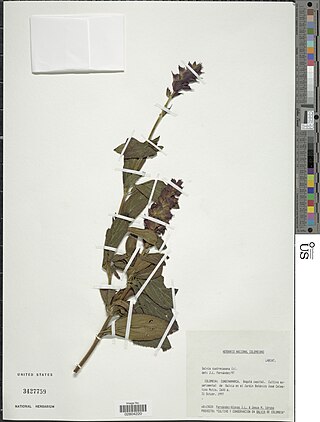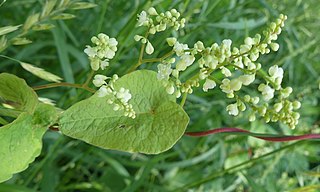In botany, the correct name according to the International Code of Nomenclature for algae, fungi, and plants (ICN) is the one and only botanical name that is to be used for a particular taxon, when that taxon has a particular circumscription, position and rank. Determining whether a name is correct is a complex procedure. The name must be validly published, a process which is defined in no less than 16 Articles of the ICN. It must also be "legitimate", which imposes some further requirements. If there are two or more legitimate names for the same taxon, then the correct name is the one which has priority, i.e. it was published earliest, although names may be conserved if they have been very widely used. Validly published names other than the correct name are called synonyms. Since taxonomists may disagree as to the circumscription, position or rank of a taxon, there can be more than one correct name for a particular plant. These may also be called synonyms.

Coleus barbatus, also known by the synonyms Plectranthus barbatus and incorrectly Coleus forskalaei, is a tropical perennial plant related to the typical coleus species. It is known by the common name woolly plectranthus. It produces forskolin, an extract useful for pharmaceutical preparations and research in cell biology.
Aralia castanopsicola, synonym Pentapanax castanopsicola, is a species of plant in the family Araliaceae. It is endemic to Taiwan. It is threatened by habitat loss. The specific epithet is spelt in various ways, including castanopsidicola.
Hemipilia yueana is a species of plant in the family Orchidaceae. It is endemic to China, where it is known from Sichuan and Yunnan. It produces pink or white flowers. The epithet is also spelt "yuana".

Salvia shannonii is a tender perennial native to the Mexican state of Chiapas, and to Guatemala, El Salvador, and Honduras, growing in or near pine forests at approximately 3,000–5,000 feet elevation. Its native habitat receives regular moisture in the form of fog, rain, and streams, with mild temperatures that stay above freezing.

Hemipilia keiskei is a species of plant in the family Orchidaceae. The species is endemic to Japan.

Hemipilia lepida is a species of plant in the family Orchidaceae found on Kyushu Island in Japan, and in the Ryukyu Islands to the south.
Galium hardhamiae is a species of flowering plant in the coffee family Rubiaceae, known by the common name Hardham's bedstraw. The scientific name may be misspelled Galium hardhamae. It is endemic to the Santa Lucia Range of southern Monterey County and northern San Luis Obispo County in California. It is a member of the serpentine soils flora in these coastal mountains. This is a perennial herb forming mats or clumps of stems no more than 30 centimeters long. The stems have many whorls of six fleshy green leaves, each leaf just 1 to 3 millimeters long. The inflorescences, clusters of yellow-green to pinkish flowers, appear in leaf axils.

Vriesea wawrana is a plant species in the genus Vriesea. This species is endemic to Brazil.

Salvia cuatrecasasiana, first described as Salvia cuatrecasana, is a perennial shrub that is endemic to a few small areas in Colombia, growing at 2,800 to 3,500 m elevation on roadsides, streamsides, and disturbed areas.
The Kew Rule was used by some authors to determine the application of synonymous names in botanical nomenclature up to about 1906, but was and still is contrary to codes of botanical nomenclature including the International Code of Nomenclature for algae, fungi, and plants. Index Kewensis, a publication that aimed to list all botanical names for seed plants at the ranks of species and genus, used the Kew Rule until its Supplement IV was published in 1913.

Cranfillia fullagari, synonym Blechnum fullagarii, is a fern in the family Blechnaceae. The specific epithet honours James Fullagar, who collected plants on Lord Howe Island for the Royal Botanic Gardens, Melbourne.
Hemipilia gracilis, commonly known as delicate amitostigma, is a species of plant in the family Orchidaceae. It is widespread across much of eastern Asia where it has been reported from Japan, Korea, Taiwan, and China.

Hemipilia cucullata is a species of flowering plant in the family Orchidaceae, native to temperate Eurasia from Poland to Japan, and also to the Himalayas. It is terrestrial, growing from tubers, to a height of up to 30 cm, with pinkish flowers arranged in a one-sided spike. It was placed in several different genera before being placed in its present genus.

Hemipilia kinoshitae is a species of flowering plant in the family Orchidaceae, native to the south Kuril Islands and northern Japan.
Hemipilia parceflora is a species of flowering plant in the family Orchidaceae, native to south-central China. The epithet has been mis-spelt "parciflora" by some authors.

Hemipilia faberi is a species of flowering plant in the family Orchidaceae, native to south-central China.

Hemipilia secundiflora is a species of plant in the family Orchidaceae. It is native from the Himalayas to China.

Polygonum ciliinode is a species of flowering plant in the family Polygonaceae, native to central and eastern Canada, and the north-central and eastern United States. The specific epithet is also spelt cilinode.

Hypericum collenetteae is a species of flowering plant of the St. John's wort family (Hypericaceae) that is found in Saudi Arabia.












